Vietnam is an extremely well-known country for its diverse culinary heritage and dishes that blend flavors, textures as well as stories about culture. Even though savoury dishes such as banh mi and pho often are the main focus, vietnamese desserts stand out as equally valuable treats, and showcase the country’s passion for sweets and creative design. Vietnamese desserts go beyond focused on satisfying your sweet cravings and are the result of generations of cultural fusion as well as local traditions as well as the creative utilization of the ingredients. They also provide the perfect glimpse of Vietnam’s culinary talent.
In this post we’ll explore the best way you can prepare the most well-known vietnamese food items step-by-step. We will also examine the rich history as well as the methods used to create them to ensure you have an intimate knowledge of the significance of these dishes and the best way to make the authentic way at home. Without further delay we’ll start this delicious journey into the delicious world of vietnamese desserts!
How to Make Vietnamese Desserts Step-by-Step
The process of making Vietnamese-inspired desserts is delicious process that calls for nutritious, natural ingredients, precise methods, as well as a little imagination. If you follow these steps to prepare vietnamese desserts, you will be able to bring authentic flavours from Vietnam to your home.
Essential Ingredients for Vietnamese Desserts
The initial step in learning to master vietnamese desserts is knowing their primary components. Every ingredient is carefully selected to improve texture, taste and aroma. What you’ll require:
- Coconut milk: 2 cups The versatile ingredient is used in many Vietnamese desserts giving them a smooth and delicious base.
- Pandan Leaves 3-4 leaves knotted Pandan provides a distinctive scent which sets Vietnamese desserts apart.
- Mung Beans 1 cup, divided and soaked. typically used to make soft fillings and bases for different recipes.
- Tapioca Pearls Half cup water-soaked Tapioca pearls give a soft texture that’s enjoyed across many desserts.
- Sugar 3/4 cups – The palm sugar is the most popular although white sugar could also be utilized.
- Bananas: 2 ripe ones – Perfect for making Banh Chuoi, a classic Vietnamese banana cake.
- Rice Flour 1 Cup – essential for getting the perfect consistency when baking or steaming desserts.
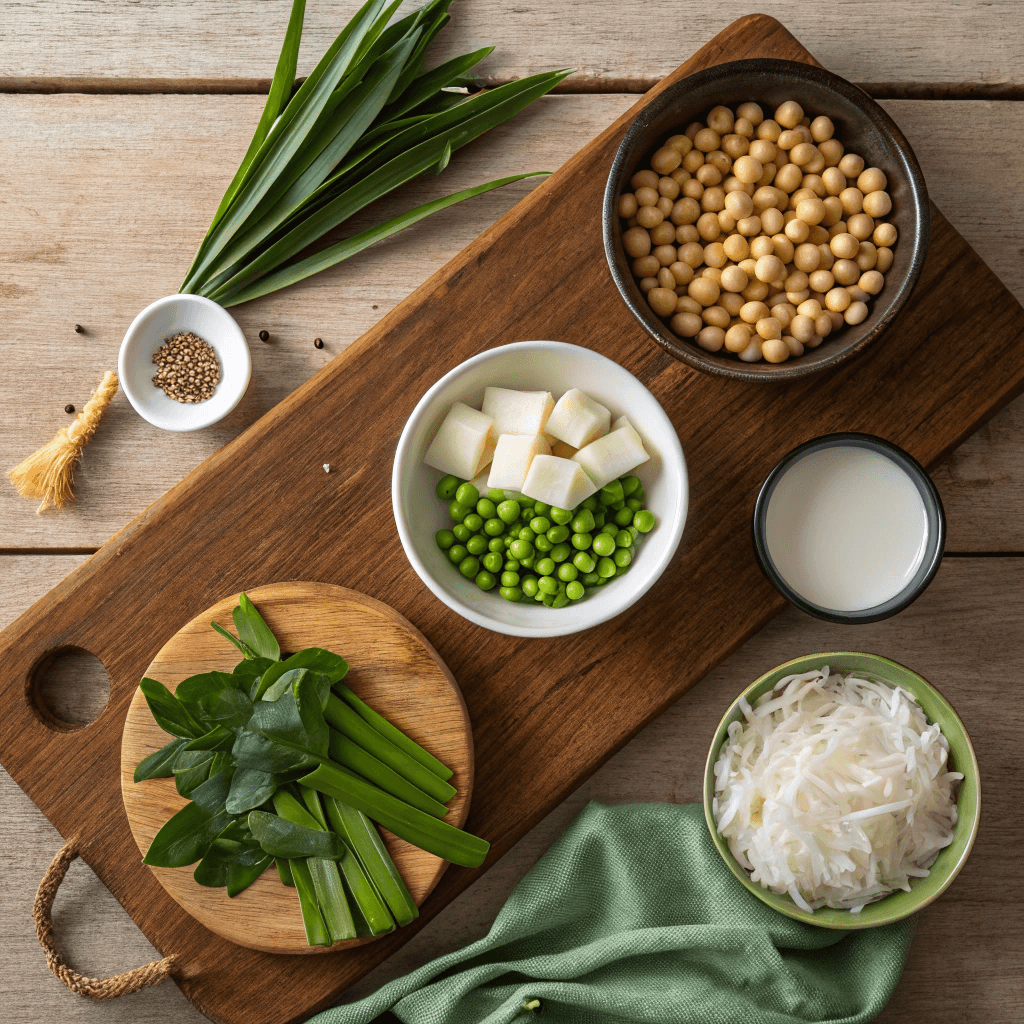
Che Ba Ba (Sweet Potato, Taro, and Tapioca Pudding)
Step 1: Preparing the Ingredients
The first step is to peel and cut the sweet potato and taro into pieces that are bite-sized. They not only add an appealing texture, but also bright colors, making the dessert look appealing. Rinse the pearls of tapioca thoroughly to get rid of any excess starch to prevent the pearls from sticking together while the cooking process.
Step 2: Cooking Tapioca Pearls
Make sure to boil an uncovered pot of water before then add the pearls of tapioca that are soaked. Mix gently so that they don’t clump and cook till the pearls become transparent. When cooked, drain the pearls then wash them in cold water to keep their chewy taste.
Step 3: Creating the Coconut Sauce
While you’re at it, cook coconut milk on a medium-sized saucepan over at a simmer. Then, add the pandan leaves making sure they’re tied so that they release their aroma and not overwhelm the food. Then, mix in the sugar as well as a dash of salt. This will balance the sweetness with a dash of flavor. This will improve the overall flavor of the dish.
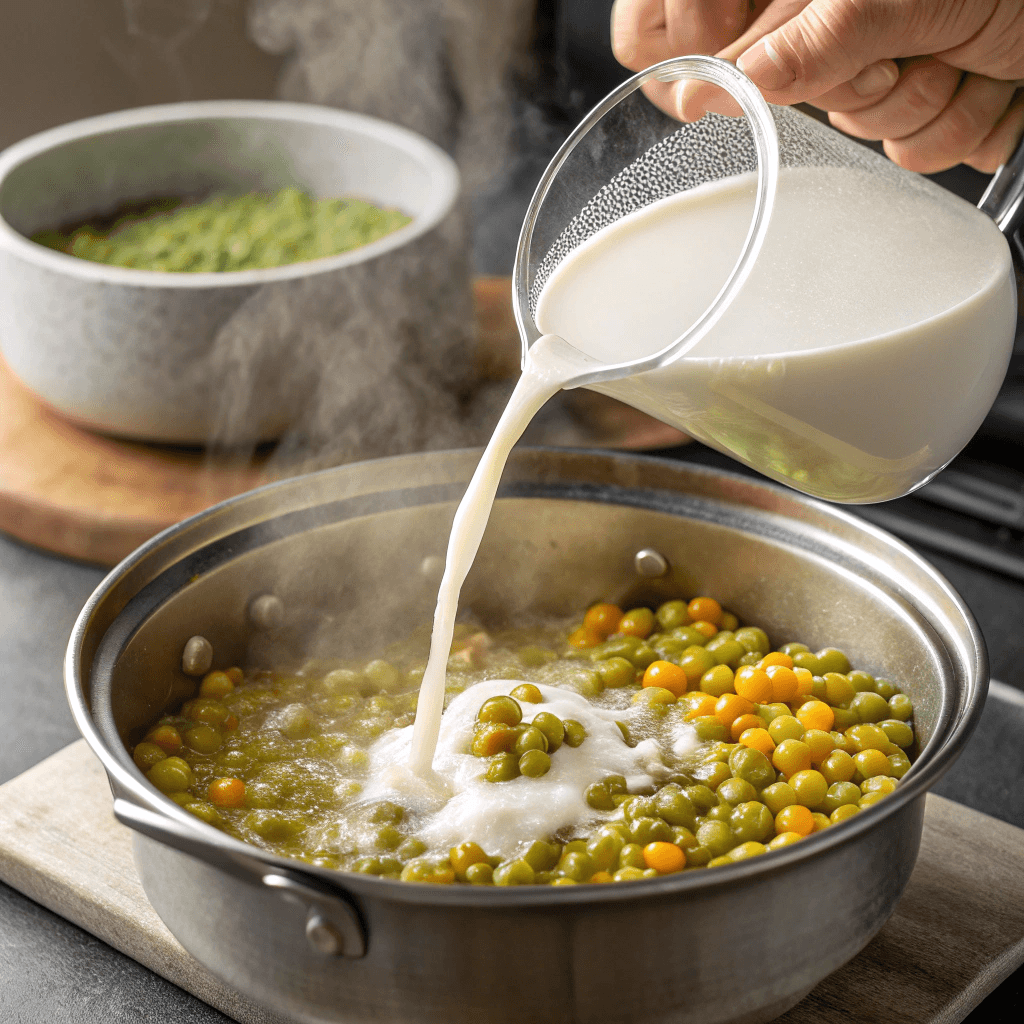
Step 4: Assembling the Dessert
Once the ingredients are in place, mix the sweet potato and Taro to the coconut sauce. Then, let them simmer gently until they begin to soften, yet maintain their shape. After that, add the pearls of tapioca and allow the dish to simmer for five more minutes. This will ensure that all tastes blend beautifully and create the perfect dessert.
Banh Chuoi (Vietnamese Banana Cake)
Step 1: Making the Batter
To make this classic dessert begin by mash the ripe bananas into the bowl of a large one until they are smooth. After that, add coconut milk, rice flour and sugar. Mix thoroughly until you have a smooth and even batter.
Step 2: Preparing the Steamer
Prior to cooking the cake, line a tray for steaming by using parchment or banana leaf to avoid sticking, and also provide the cake with the scent of a delicate aroma. Place the cake batter in the tray and spread it out evenly so that the cake cooks evenly.
Step 3: Steaming the Cake
The tray should be placed in an oven that is preheated. The steamer should be covered with an unclean kitchen towel to take in the excess moisture and stop it from spilling over on the cake. It should take 30-40 minutes to steam and check it every now and then to make sure that the cake is set evenly.
Step 4: Garnishing and Serving
After steaming, let your cake cool completely before cutting the cake into pieces. Decorate with coconut shredded and sesame seeds or the addition of coconut cream to add more flavor. The smooth and creamy consistency that comes from Banh Chuoi makes it a popular choice for a crowd!
Cooking Techniques and Tips for Vietnamese Desserts
Making the best vietnamese desserts takes concentration on detail as well as a couple of helpful suggestions. These are some tips for improving your skills in making desserts:
- Make use of fresh ingredients: Fresh coconut milk and pandan leaves greatly improve the flavor of your food.
- Do not soak Tapioca as well as Mung Beans: Proper soaking will reduce the cooking time and gives the softness of the texture.
- Slow Cooking and Low Temperature: Desserts like che are a benefit of slow cooking. It allows the flavors to mature fully.
- Balance Sweetness Vietnam-based desserts usually focus on subtle sweetness. You can adjust the sugar according to your preference.
Cultural Significance and Modern Innovations
Vietnamese desserts have a deep rooted in the cultural traditions. As an example, dishes like Che Ba Ba are often made during gatherings with family and festivity celebrations. They symbolize happiness and unity. In addition, new variations of traditional recipes are popping up by blending traditional desserts with flavors such as matcha, or coffee. If you want to see a bigger picture look into the innovative ideas showcased by Asian Desserts, that highlight the region’s diverse tradition of desserts.
Furthermore, the blending of Western techniques has brought about inventions such as the Boston Cream Cake This shows the way vietnamese desserts have continued to change yet retain their essence.
Final Steps for Che Ba Ba
Step 5: Garnishing for a Beautiful Presentation
When serving, think about garnishing the dessert with toasty sesame seeds or coconut shredded for a boost of texture and flavor. Additionally, serving the pudding warm enhances its creaminess, though it can also be enjoyed chilled.
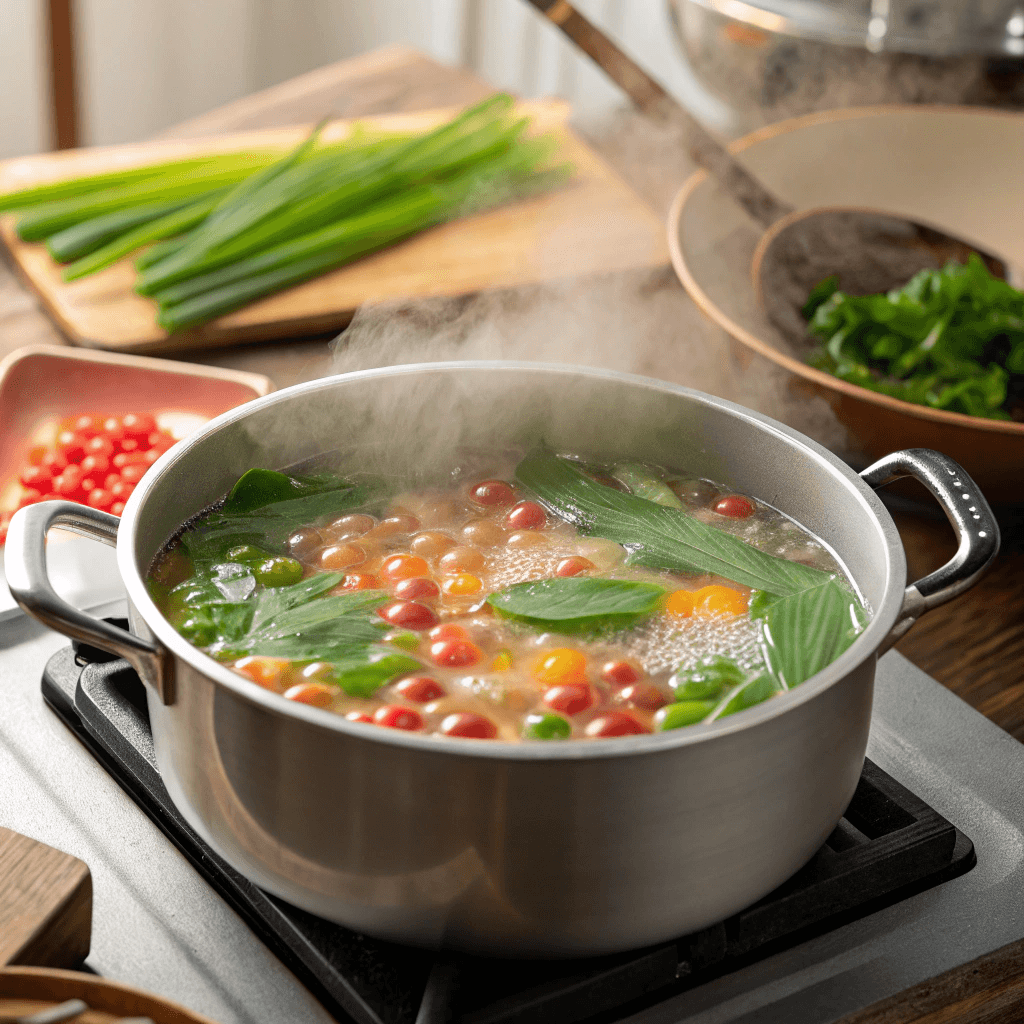
Step 6: Placing the Plates in Stil
Make individual serving bowls. Be sure that you have an even portion of sweet potatoes or taro as well as tapioca pearls. It is possible to drizzle coconut milk onto the top of the dish for a gorgeous appearance.
Completing Banh Chuoi
Step 5: Creating a Caramelized Finish
If you’d like to add a taste of indulgence, lightly brush the top of your steamed banana cake with light sugar syrup, then broil it for a few seconds to create the caramelized look.
Step 6: Pairing and Serving Suggestions
For serving Banh Chuoi with a twist, serve it with a tiny glass of Vietnamese coffee to enjoy a delicious balance of bitter and sweetness. Also, this cake is paired perfectly with a scoop of coconut ice cream to give it an exciting variation.
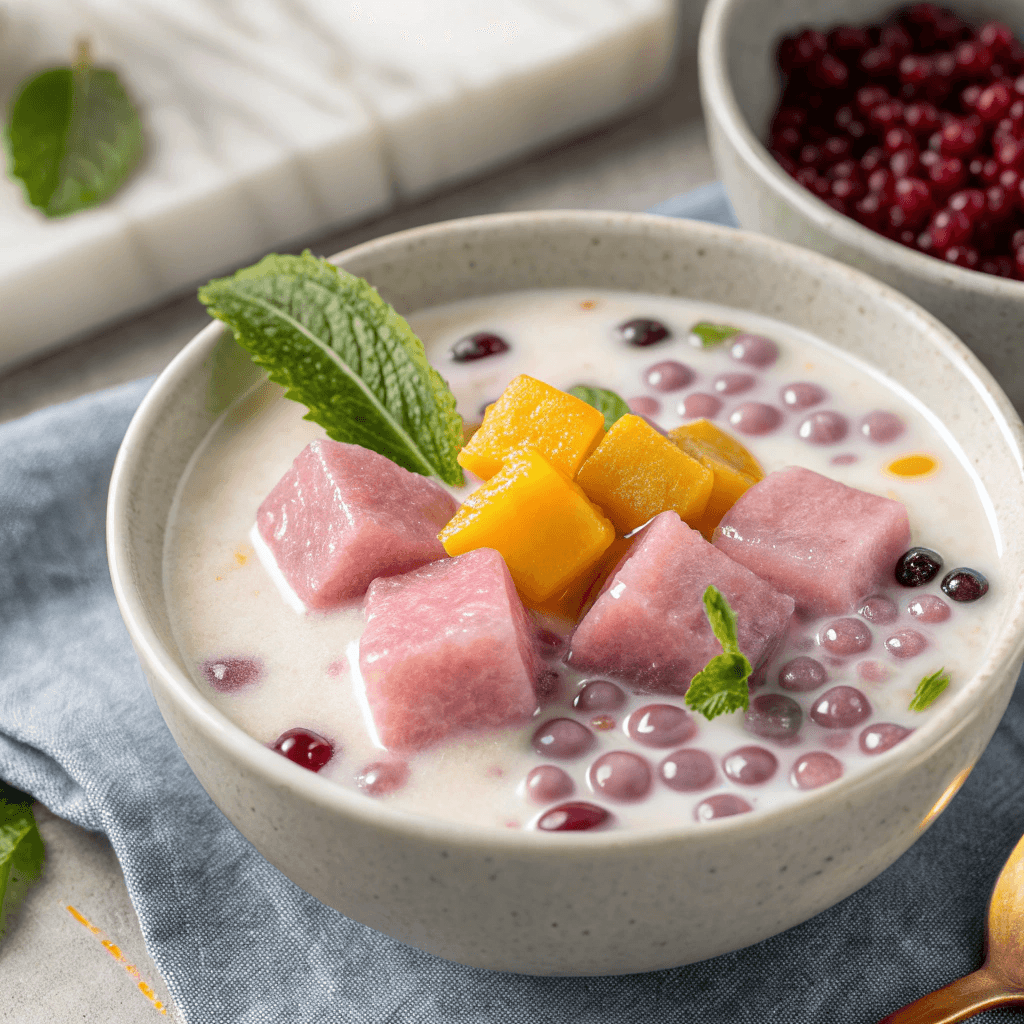
Pro Tips & Variations
Advanced Tips for Perfect Results
- Get Perfect Consistency Be sure to accurately measure your ingredients to ensure the proper balance of dry and liquid ingredients is essential to the success of both banana and che cake.
- Improve Flavors by Infusing: Try steeping pandan leaves for a longer period in coconut milk to get a more intense flavor. In the same way, adding a dash of cinnamon into Banh Chuoi batter can introduce the scent of a spicy, warm note.
Creative Variations for Dietary Preferences
- Vegan option: Substitute honey with maple syrup or agave syrup in order to make the recipe plant-based and not sacrifice the sweetness.
- Low-Sugar Version Use monk fruit sweetener to make better health, and is especially ideal for che.
- Gluten-Free Version Be sure that the rice flour you use has been tested for gluten-free in order to satisfy the dietary restriction.
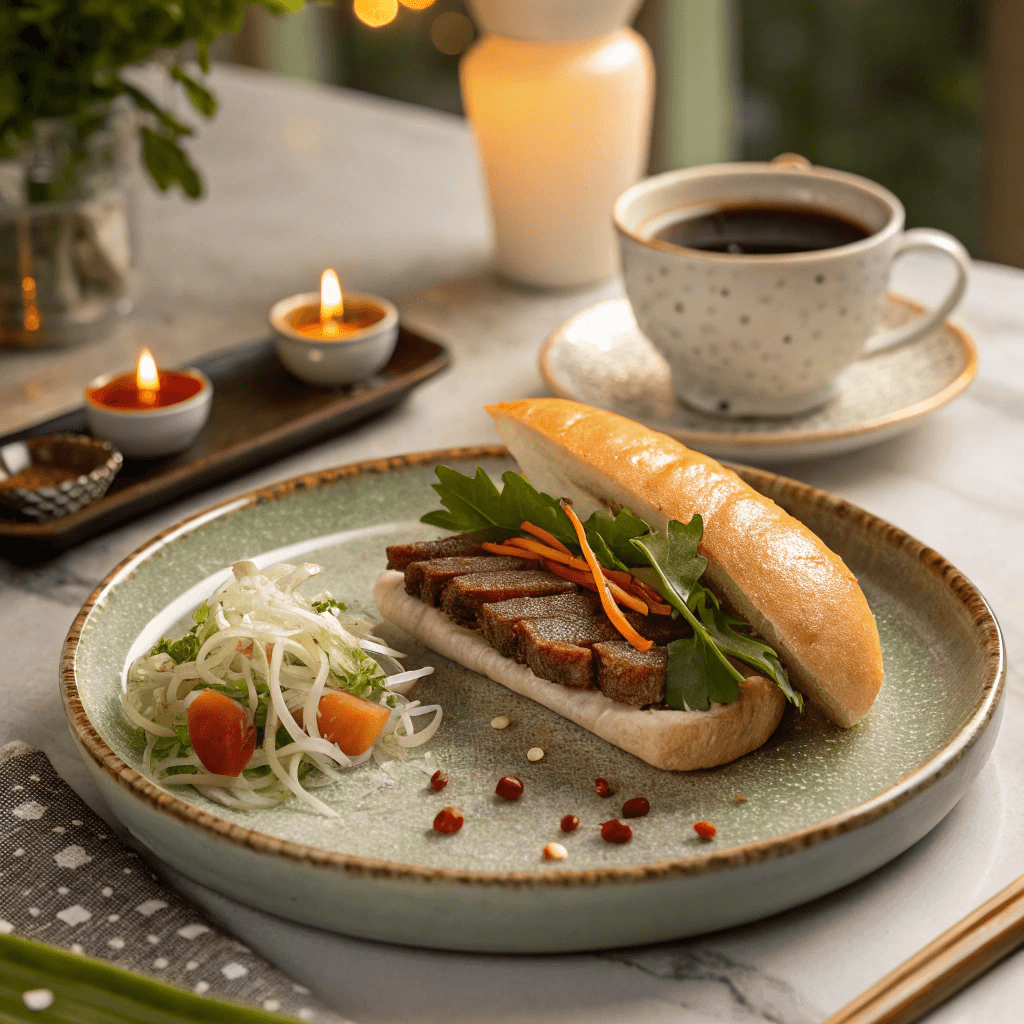
Fusion and Modern Twists
Vietnamese sweets are able to lend perfectly to concepts of fusion. Like mixing matcha powder in banh choi Banh Chuoi batter or incorporating espresso shots in the coconut sauce that is served with Che can create bold, unique flavor while keeping traditional ingredients.
FAQs
What’s a most popular dish in Vietnam?
Vietnam is the home of many popular desserts. However, che with the variety of variations like Che Thai or Che Ba Ba is one of the most loved. The sweet soups are usually composed of the coconut milk and beans as well as a range of other ingredients including the fruits, tapioca pearls and Agar Jelly.
What’s the most loved Vietnamese cake?
Banh Chuoi, or Vietnamese banana cake, is frequently considered to be the most sought-after dessert in the world. The soft consistency, natural sweetness as well as its versatility with a wide range of toppings makes it a popular choice for guests.
Is there a most popular Vietnamese recipe?
Although it is not a dessert, pho is definitely the most well-known Vietnamese dish in the world. But when you think of sweets Che is perhaps the most popular dessert widely consumed as a dessert across the globe.
What’s the name of che dessert in Vietnamese?
Che can be described as a vast range of vietnamese desserts that include sweet soups, or puddings. They are available in many variations, and often include coconut milk and beans, fruit, as well as colorful jellies.
How can you preserve Vietnamese desserts?
Vietnamese desserts such as che as well as Banh Chuoi can be stored in airtight jars in the refrigerator for as long as three days. In order to get the most out of them, cook Che gently on low heat prior to serving.
Are Vietnamese desserts gluten-free?
A lot of traditional vietnamese desserts can be gluten-free because they are based on tapioca and rice starch. But, it is essential to check the ingredients in order for cross-contamination to make sure there is no contamination.
Which are the most delicious desserts that you should sample at Ho Chi Minh City?
In Ho Chi Minh City, the most popular choices are Che Thai, Banh Bo as well as Suong Sao. Street vendors as well as special sweet shops sell these savory treats in the most freshest of forms.
Conclusion
Vietnamese desserts are an expression of tastes, textures and cultural traditions. From the rich and creamy flavor of Che to the nourishing sweet that is Banh Chuoi, each dish conveys the story of the culinary genius of Vietnam. If you can master the methods described in this book and playing using different recipes, you’ll introduce the rich Vietnamese desserts to your kitchen. In the end, these dishes provide more than just food, they’re an expression of a lifestyle that is rich in innovation and tradition. Gather your ingredients and begin your personal adventure through the beautiful countrysides of Vietnam!

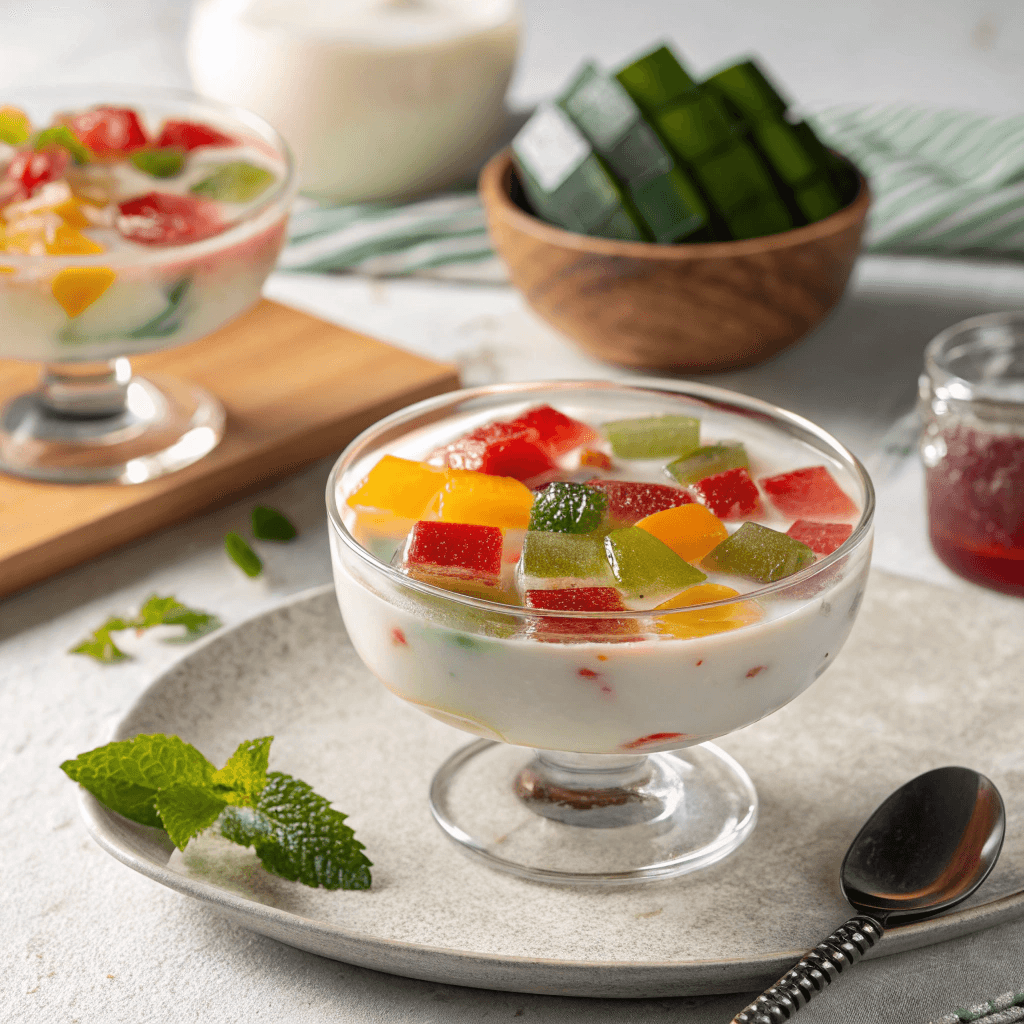
4 thoughts on “Vietnamese Desserts: Exploring the Sweet Flavors of Vietnam”